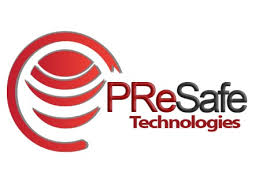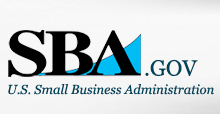Best Value or Best Price? Is there really any debate?
If you are a GTSC member serving federal customers through the GSA Multiple Award Schedules (MAS) program, you may already be feeling the effects of pricing policies adopted by the agency last year. For others vendors, these changes could disrupt your offerings and impede agencies from receiving the best available solutions.
While well-intentioned and possibly in response to pressure from fiscal conservatives on Capitol Hill, an emerging procurement trend is the GSA placing new emphasis on lowest price as the primary basis of award over historical best value in awards. SIA members, particularly integrators, have certainly felt the effect of GSA policy changes for justifying pricing.
The new policy follows a MAS contract amendment allowing the GSA to consider pricing on competitor contracts and pricing in “other venues” to make a fair and reasonable price determination in accepting/rejecting offers or requiring price reductions. However, the price comparison used is so wide that it includes prices from unverified and/or unqualified sources likely to be outdated or invalid, making the tool inaccurate. Simply put, these new GSA pricing guidance encourages contracting officers to conduct “apples-to-oranges” price comparisons through sources ranging from GSA Advantage to public Internet sites listing the products of vendors not subject to GSA requirements.
As federal contractors, GTSC members know that a business obtains a GSA Schedule Contact after negotiating fair and reasonable pricing with GSA as based on their commercial practices and their most favorable customer(s). These Schedule Contract holders are audited and re-negotiated again, when negotiating each five-year evergreen period afterward. If a vendor has already negotiated a best price determination for the basis of the contract award, why should there by further comparison of this vendor to another vendor to verify the pricing? If GSA negotiations are successful, government customers are getting better than or equal to a GSA supplier’s best customer. Right? Why then would such as supplier be required to change its pricing based on comparisons to vendors of different scale and/or not vendors not subject to the same GSA requirements? These are some of the questions on the minds of many GSA contractors seeking to provide best value to their government customers.
For suppliers within the security industry, the revised GSA pricing policy could have the following effects:
• Bogus or outdated internet prices could be used to disqualify legitimate offers.
• Security integrators could be forced to supply parts at comparison prices that do not include the service/maintenance component.
• Security integrators could be forced to remove key parts of a security system as pricing updates on components are often rejected, splintering the ability to offer a complete security system under the Schedule Program.
• Erroneous comparisons could be made among prices offered by dealers or distributor versus security integrators. Sales of individual items should have different pricing consideration than security integrators offering a total solution with trained and certified staff.
• Small businesses are put at a disadvantage when lowest price consideration overrides all others.
• Loss of participation in the MAS program could result due to unreasonably low prices.
The Security Industry Association strongly supports the MAS Program and sincerely respects the work of GSA contracting officers. Our members are optimistic that industry and GSA can work together to modify this price comparison policy and prevent businesses from concluding that the cost to maintain a GSA contract exceeds the intended benefit.
Contributing Author: Donald Erickson
 Donald Erickson is CEO of GTSC’s Strategic Partner, the Security Industry Association (SIA). He has served on the GSA Multiple Award Schedules Advisory Committee and worked for Senator Rod Grahms (R-MN) on telecommunications and technology policy.
Donald Erickson is CEO of GTSC’s Strategic Partner, the Security Industry Association (SIA). He has served on the GSA Multiple Award Schedules Advisory Committee and worked for Senator Rod Grahms (R-MN) on telecommunications and technology policy.








 Entering a new market is a formidable and demanding endeavor, particularly for an emerging business in a recovering economy. It includes building new relationships and alliances and fundamentally understanding how business is conducted in order to be competitive and win business. As an emerging business, it is crucial to remain efficient and effective during each step. Our due diligence led us to the U.S. Small Business Administration (SBA) 8(a) program as an efficient and effective approach for entering the Federal marketplace.
Entering a new market is a formidable and demanding endeavor, particularly for an emerging business in a recovering economy. It includes building new relationships and alliances and fundamentally understanding how business is conducted in order to be competitive and win business. As an emerging business, it is crucial to remain efficient and effective during each step. Our due diligence led us to the U.S. Small Business Administration (SBA) 8(a) program as an efficient and effective approach for entering the Federal marketplace.

 If you’re a small business owner interested in making the federal government one of your next customers, you can benefit greatly from certifying your business first. Many government agencies require that a certain percentage of its work is set aside for small businesses (and woman-owned, veteran-owned and more), so certifying your business can help you successfully compete for government contracts. These resources can help:
If you’re a small business owner interested in making the federal government one of your next customers, you can benefit greatly from certifying your business first. Many government agencies require that a certain percentage of its work is set aside for small businesses (and woman-owned, veteran-owned and more), so certifying your business can help you successfully compete for government contracts. These resources can help: